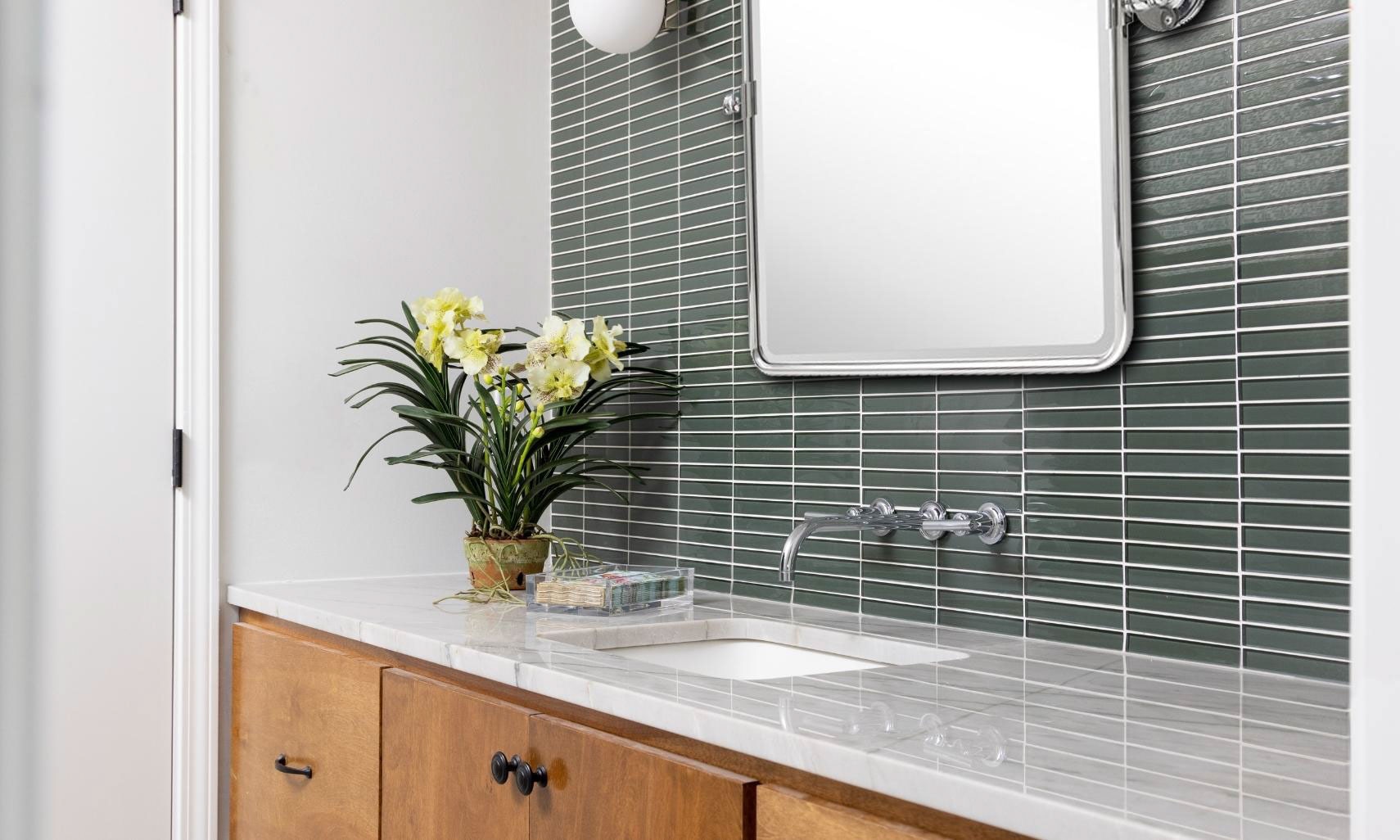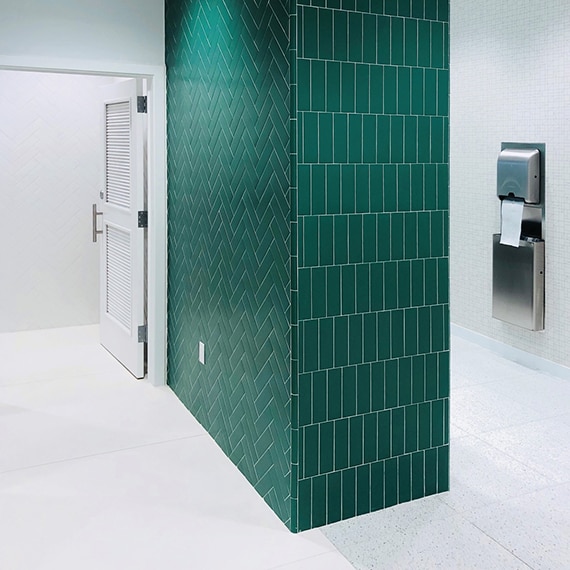
Step-By-Step Wall Tile Installation
Quick Tips:
• For wall layout, find the center point of the wall using a level to draw a plumb line in the wall's center.
• Generally you should wait about 24 hours before grouting (refer to the adhesive package for specifics).
Step 1: Surface Preparation
Tile may be installed over most structurally sound substrates, if they are clean, smooth, dry and free of wax, soap scum and grease.
Any damaged, loose or uneven areas must be repaired, patched and leveled.
Remove any moldings, trim, appliances, etc., which could interfere with installation.
STEP 2: WALL LAYOUT
Begin by finding the center point of the wall, using a level to draw a plumb line in the wall's center.
Lay out a row of loose tiles across the bottom of the wall from the center line leaving uniform joints between tiles. (Daltile products have integral spacer lugs so tiles can be butted together leaving a consistent 1/16" joint automatically.)
If this layout leaves cuts smaller than 1/2 tile, adjust center line 1/2 tile closer to the side wall.
Next, determine the lowest point of the floor or tub, using a level horizontally. Stack two tiles here, and at the top draw a horizontal line on the wall.
With the level, continue the line around all side walls to be tiled. This is a guideline for the first row of tiles to be set above.
STEP 3: COUNTERTOP LAYOUT
Begin with counter trim, then set full tiles from the first row working back – thus all cut tiles will be placed on the back row against wall. Trim pieces are available for use around recessed appliances.
Snap parallel chalk lines on the substrate as needed to keep rows straight.
Countertops should have a tile backsplash at least 4" high for protection. For backsplashes, match up joints with the countertop tile. Begin with full tiles working up from countertop – this way cut tiles will be at the top, under the cabinets.
Use bullnose trim pieces on flat walls or sides.
STEP 4: APPLYING ADHESIVE
Select the right adhesive for the substrate you're using. Carefully read and follow all instructions and precautions on the adhesive or mortar package. Mix only enough to be used within 30 minutes.
Using the type of trowel recommended on the adhesive package spread a 1/4" coat on the surface of one grid area, using the flat side of the trowel. Do not cover guidelines.
Next, use the notched side of trowel to comb adhesive into standing ridges by holding trowel at a 45-degree angle.
Then remove excess adhesive, leaving a uniform, ridged setting bed.
Don't spread a larger area than can be set in 15 minutes.
Step 5: Cutting Tile
Carefully measure tiles to be cut and mark with a pencil or felt-tip pen.
Make straight or diagonal cuts with a tile cutter, curved cuts with a nipper (chipping away small pieces for best results) and full-length curved cuts with a rod saw.
Sharp-cut edges may be smoothed with a carborundum stone.
Step 6: Setting Tile
Variation of shades is an inherent characteristic of ceramic tile – mix tiles from several cartons as you set, for a blended effect.
Start with the first tile in the corner of the grid and work outward.
Set tiles one at a time using a slight twisting motion. Don't slide tiles into place.
Insert tile spacers as each tile is set, or leave equal joints between tiles.
Fit perimeter tiles in each grid last, leaving 1/4" gap between tile and wall.
Any rectangle porcelain should never be set in a running bond pattern, rather no more than a 1/3 overlap; the joint should be widened to 3/16" and use of a large unit porcelain mortar should be employed.
When grid is completely installed, tap in all tiles with a rubber mallet or hammer and wood block to ensure a good bond and level plane.
Remove excess adhesive from joints with a putty knife and from tile with a damp sponge.
Do not touch the tiles until they are set (usually in 24 hours).
Step 7: Grouting Joints
Generally, you should wait about 24 hours before grouting (refer to the adhesive package for specifics). Carefully read and follow all instructions and precautions on the grout package. Make only enough to use in about 30 minutes.
Remove tile spacers and spread grout on the tile surface, forcing down into joints with a rubber grout float or squeegee. Tilt the float at a 45-degree angle.
Remove excess grout from surface immediately with the edge of float. Tilt it at a 90-degree angle and scrape it diagonally across tiles.
Wait 15-20 minutes for grout to set slightly, then use a damp sponge to clean grout residue from surface and smooth the grout joints. Rinse sponge frequently and change water as needed.
Let dry until grout is hard and haze forms on tile surface, then polish with a soft cloth. Rinse again with sponge and clean water if necessary.
Wait 72 hours for heavy use.
Don't apply sealers or polishes for three weeks, and then only in accordance with manufacturer's recommendations.
Additional Resources
How to Lay Tile Patterns
A multitude of tile patterns to give your space pizzazz. Includes downloadable PDFs.
Selecting Wall Tile
From feature wall & backsplash to shower & outdoor tile, see how to select wall tile.
Stunning Countertops
From quartz to natural stone to large-scale porcelain, see our massive variety of countertops.
Which Grout is Best for My Tile
Leading grout experts share how to select the perfect type of grout for your tile.





